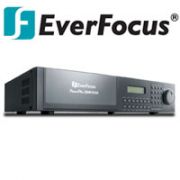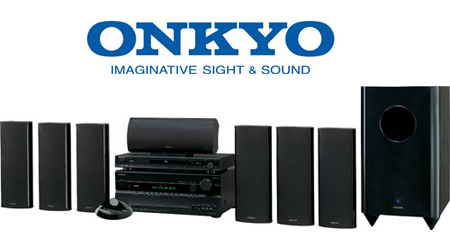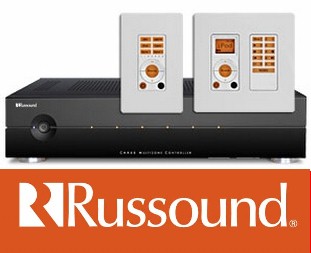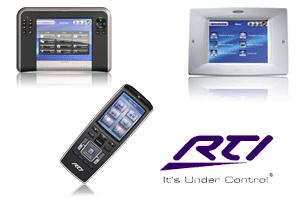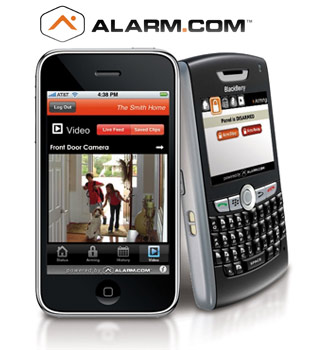kellarsecurity.com
Phone- 770.534.5947 Gainesville Georgia
Kellar Security provides numerous products and services.
Professional Security and Video Installations Whole House Audio and Theater Design HOME PAGE PRODUCTS ABOUT US CONTACT US "Intrusion & Property Protection" Whether you want protection for your home or even a small business, the GE Home Security System from Kellar Security Services will fulfill your home security needs and most importantly, fit your budget. Here are just a few of the reasons to trust your home security with a GE Home Security System from Kellar Security Services:
BEST Price in Home Security - Compare & Save! Professional Security
and Video Installations Whole House Audio and
Theater Design HOME PAGE
PRODUCTS
ABOUT US
CONTACT US
EPARA264-16X4
ECOR264-16X1 The ECOR264 D/F series DVR offers H.264 compression format for efficient disk utilization and network bandwidth conservation without sacrificing image quality. ECOR264-4D1 /
ECOR264-4F1 /
ECOR264-8D2 NEW Paragon Series Paragon Series MPEG4 full size DVRs offer up to 480 FPS and Graphical User Interface (GUI) so you can simply 'point & click' on menu icons to navigate through numerous functions. EPARA16D3 /
EPARA16D3R ECOR Series ECOR Series compact size DVRs are equipped with simple Graphical User Interface (GUI) for quick and easy menu configuration.
ECOR4D /
ECOR4F /
ECOR8D /
ECOR8F EDR Mobile DVRs Compact size EDR Mobile DVRs are shock resistant and specially ruggedized for any mobile applications. EDR810M
Professional Security
and Video Installations Whole House Audio and
Theater Design HOME PAGE
PRODUCTS
ABOUT US
CONTACT US
Basic home theater made up of a home entertainment system consisting of large-screen LCD television and a <">DVD player Home cinema, also commonly called home theater, are home entertainment set-ups that seek to reproduce a movie theater experience and mood with the help of video and audio equipment in a private home. In the 1950s, playing home movies became popular in the United States as Kodak 8 mm film projector equipment become affordable. The development of multi-channel audio systems and later LaserDisc in the 1980s created a new paradigm for home cinema. In the early to mid 1990s, a typical home cinema in the United States would have a LaserDisc or VHS player fed to a large rear-projection television set. Some people were using expensive front projectors in a darkened viewing room. Beginning In the late 1990s,and continuing through out much of the 2000s home theater technology progressed with the development of the DVD-Video format, Dolby Digital 5.1-channel audio ("surround sound") speaker systems, and high-definition television. In the 2010s 3D television technology and Blu-ray Disc have ushered in a new era of home theater once again. In the 2000s, the term "home cinema" encompasses a range of systems meant for movie playback at home. The most basic and economical system could be a DVD player, a Standard Definition large-screen television with at least a 27" diagonal screen size, and a "home theater in a box" surround sound speaker system with a subwoofer. While a more expensive home cinema set-up might include a Blu-ray Disc player, media center computer or streaming device with a 10-foot user interface, a High Definition video projector and projection screen with a 100+" Diagonal Screen size "and a several thousand-watt home theater receiver with five to seven surround sound speakers plus a powerful subwoofer. The most advanced systems are 3D TV enabled home theaters making use of 3D TV sets/projectors and Blu-ray 3D players which use special glasses to aid viewers in seeing 3D movies and sporting events.Home theater means different things to different people. Home theater designs and layouts are personal choices and the only known minimum set of requirements for a home theater are: A television set or video projector CRT(no new models sold in U.S.), LCD, DLP , Plasma display, organic light-emitting diode (OLED), SXRD, Laser TV, rear-projection TV, video projector, etc. (SDTV, HDTV, or 3DTV) at least 27" inches measured diagonally, an AV receiver or preamp (surround processor) and amplifier combination capable of at least stereo sound but preferably 5.1 Channel Dolby Digital and DTS audio,and something that plays or broadcast movies in at least stereo sound such as a VHS HI-FI VCR or LaserDisc Player (no new stand-alone models of either are available. VHS vcr's are usually bundled in combo decks with DVD players) , a DVD player and/or a Blu-ray Disc Player, cable or satellite receiver, video game console, etc. Finally a set of speakers at least two are needed but more common are anywhere from six to eight with a subwoofer for bass or low frequency effects.[1] The most expensive home theater set-ups, which can cost over $100,000 (US), have expensive digital projectors and projection screens, and maybe even a custom-built screening rooms which include cinema-style chairs and audiophile-grade sound equipment designed to mimic (or sometimes even exceed) commercial theater performance. Today, Home Cinema implies a real "cinema experience" and therefore a higher quality set of components than an average television with only built-in speakers provides. A typical home theater includes the following parts: [edit] Component systems vs. theater-in-a-boxHigh-quality home cinemas are assembled from component pieces purchased separately to provide the best combination of equipment for the cost. It is possible to purchase home theater in a box kits that include a set of speakers for surround sound, an amplifier/tuner for adjusting volume and selecting video sources, and sometimes a DVD player. Though these kits often pale in comparison to a custom-built home cinema, they are inexpensive and easy to set up; one needs only to add a television and some movies in order to create a simple home theater. This makes them popular in the public's eyes.[citation needed] [edit] Dedicated home theater rooms
A large projection screen in a media room.

This example is of home theater screening room with video projector mounted in a box on the ceiling. Built-in shelves provide a place for movie decor, DVDs, and equipment. Note the component stack on the right, where the audio receiver, DVD player, secondary monitor, and video game system are located.
Some home cinema enthusiasts go so far as to build a dedicated room in the home for the theater. These more advanced installations often include sophisticated acoustic design elements, including "room-in-a-room" construction that isolates sound and provides the potential for a nearly ideal listening environment. These installations are often designated as "screening rooms" to differentiate from simpler installations. This idea can go as far as completely recreating an actual cinema, with a projector enclosed in its own projection room, specialized furniture, curtains in front of the projection screen, movie posters, or a popcorn or vending machine with snack food and confectionery. More commonly, real dedicated home theaters pursue this to a lesser degree. Presently the days of the $100,000 and over home theater is being usurped by the rapid advances in digital audio and video technologies, which has spurred a rapid drop in prices making a home cinema set-up more affordable today than ever before. This in turn has brought the true digital home theater experience to the doorsteps of the do-it-yourself people, often for much less than what you would expect to pay for a low budget economy car. Current consumer level A/V equipment can meet and often exceed in performance what you would expect to experience at a modern commercial theater. [edit] SeatingHome theater seating consists of chairs specifically engineered and designed for viewing movies in a personal home theater setting. Most home theater seats have a cup holder built into the chairs' armrests and a shared armrest between each seat. Some seating is movie theater-style chairs like those seen in a movie cinema, which features a flip-up seat cushion. Other seating systems have plush leather reclining lounger types, with flip-out footrests. Additional features like storage compartments, snack trays, Tactile transducers (nicknamed "Bass Shakers"), or even electric motors to recline the chair are available. This seating is more like to be a row of recliners made by companies such as Berkline and in many cases even includes a built in cup holder. There are many different styles and brands to choose from so that you will be far more comfortable than you would be in a theater, but still get that same movie theater feeling.[2] [edit] Backyard theaterIn places that have the proper outdoor atmosphere, it is possible for people to set up a home theater in their backyard. Depending on the space available, it may simply be a temporary version with fold able screen, a projector and couple of speakers, or a permanent fixture with huge screens and dedicated audio set up poolside. Due to the outdoor nature, it is quite popular with BBQ parties and pool parties. Some specialist outdoor home cinema companies are now marketing packages with inflatable movie screens and purpose built AV systems.[3] Some people have built upon the idea, and constructed mobile drive-in theaters that can play movies in public open spaces. Usually, these require a powerful projector, a laptop or DVD player, outdoor speakers and/or an FM transmitter to broadcast the audio to other car radios.[4][5] [edit] History[edit] 1950s, 1960s, and 1970sIn the 1950s, home movies became popular in the United States and elsewhere as Kodak 8 mm film (Pathé 9.5 mm in France) and camera and projector equipment became affordable. Projected with a small, portable movie projector onto a portable screen, often without sound, this system became the first practical home theater. They were generally used to show home movies of family travels and celebrations but also doubled as a means of showing private stag films. Dedicated home cinemas were called screening rooms at the time and were outfitted with 16 mm or even 35 mm projectors for showing commercial films. These were found almost exclusively in the homes of the very wealthy, especially those in the movie industry. Portable home cinemas improved over time with color film, Kodak Super 8 mm film film cartridges, and monaural sound but remained awkward and somewhat expensive. The rise of home video in the late 1970s almost completely killed the consumer market for 8 mm film cameras and projectors, as VCRs connected to ordinary televisions provided a simpler and more flexible substitute. [edit] 1980sThe development of multi-channel audio systems and LaserDisc in the 1980s added new dimensions for home cinema. The first known home cinema system was designed, built and installed by Steve J. LaFontaine as a sales tool at Kirshmans furniture store in Metairie, Louisiana in 1974. He built a special sound room which incorporated the earliest quadraphonic audio systems and he modified Sony Trinitron televisions for projecting the image. Many systems were sold in the New Orleans area in the ensuing years before the first public demonstration of this integration occurred in 1982 at the Summer Consumer Electronics Show in Chicago, Illinois. Peter Tribeman of NAD (USA) organized and presented a demonstration made possible by the collaborative effort of NAD, Proton, ADS, Lucasfilm and Dolby Labs who contributed their technologies to demonstrate what a home cinema would "look and sound" like. Over the course of three days, retailers, manufacturers, and members of the consumer electronics press were exposed to the first "home like" experience of combining a high quality video source with multi-channel surround sound. That one demonstration is credited with being the impetus for developing what is now a multi-billion dollar business. [edit] 1990sIn the early to mid '90s, a typical Home Cinema would have a LaserDisc or VHS player fed to a large screen: rear projection for the more affordable setups, and LCD or CRT front projection in the more elaborate. In the late 1990s, the development of DVD-Video, Dolby Digital and DTS 5.1-channel audio, and high-quality front video projectors that provide a cinema experience at a price that rivals a big-screen HDTV which sparked a new wave of home cinema interest. [edit] 2000sIn the 2000s, developments such as high-definition video, Blu-ray Disc (as well as the now-obsolete HD DVD format) and newer high-definition 3D display technologies enabled people to enjoy a cinematic feeling in their own home at an affordable price. Newer lossless audio from Dolby Digital Plus, Dolby TrueHD, DTS-HD High Resolution Audio and DTS-HD Master Audio with more audio channels, like 6.1, 7.1, 9.1, 9.2, 10.2, and 22.2 were also introduced for more cinematic feeling. [edit] Entertainment equipment standardsNoise Criteria (NC) are noise level guidelines applicable to cinema and home cinema. For this application, it is a measure of a room's ambient noise level at various frequencies. For example, in order for a theater to be THX certified, it must have an ambient sound level of NC-30 or less. This helps to retain the dynamic range of the system.[6]
|


